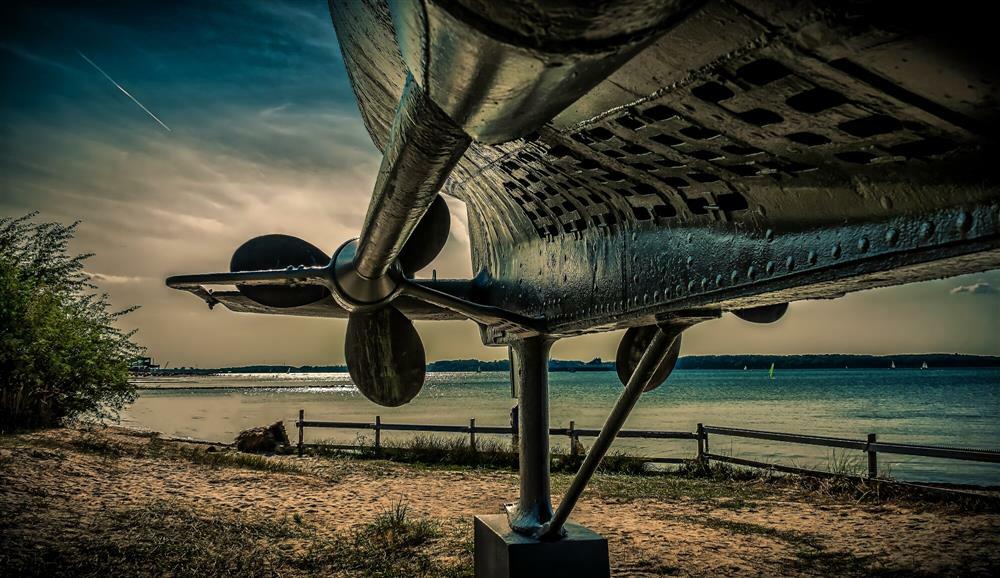According to the National Marine Manufacturers Association, an average of 100 million people go boating each year. With that many boats on the water, propellers are making big waves in the boating industry.
Knowing which propeller is right for your boat can make a substantial difference in the efficiency and quality of your boating experience.
Keep reading for an introductory guide to the different types of boat propellers.

Boat Engine Type
There are three different kinds of boat engines that use propellers, and the propeller you need is related to which type of engine you have.
One type of boat engine is an inboard engine. This type of engine requires that the inboard boat propeller you choose allows for enough clearance space at the bottom of the boat's hull.
Another type of engine, an outboard engine, typically uses propellers that have three to four blades. Three to four blade propellers are the most efficient for this engine and the kinds of boats that use outboard engines.
Stainless steel and aluminum are the most common materials used for outboard boat propellers.
The third kind of engine, the stern drive engine, combines the drive of an outboard engine with the power of an inboard engine. These boat engines use sterndrive propellers that are often aluminum or stainless steel.
Boat Propeller Material
The most common materials that make up a boat propeller have qualities that make them best suited for certain types of boating experiences.
The boat propeller material aluminum is a popular material because it is cost-efficient. Aluminum is easily fixable if damaged. It also weighs less than other materials like stainless steel.
Aluminum propellers are often found on small to medium sized boats. They are also frequently found in boating environments where damage due to debris or grounding is common.
Bronze, another commonly used boat propeller material, is popular because of how well it resists corrosion.
Bronze boat propellers are often seen in inboard engines, and they are strong propellers that resist flexing and fatigue.
Another common boat propeller material is stainless steel. Stainless steel boat propellers can withstand high speeds and harsh environments. Their durability makes them a popular propeller choice.
Stainless steel boat propellers perform well when used for heavy boats because of their durability.
Metal Alloys like Nibral are also among the materials that can be used for boat propellers. The alloy Nibral is a combination of nickel, aluminum, and bronze.
The combination of these metals creates a corrosion-resistant, strong, and durable propeller. Nibral propellers are often found in larger boats with inboard engines or in sterndrives.
Number of Blades
Boat propellers typically have two to five blades. The number of blades on a propeller affects the propeller's efficiency and smoothness.
A two-blade propeller is mainly used for sailboats that also have an auxiliary power source because of its minimal resistance.
Three-blade propellers are a good balance of efficiency and smooth operation. This makes them a popular choice among boaters.
Three blades are few enough that they do not create much drag and resistance. They are also enough to operate smoothly with less vibration than a one or two-blade propeller.
A four-blade propeller is even more smooth than a two or three blade propeller. The potential increase in propeller area can improve lift and acceleration.
The addition of a fourth blade is useful for larger or heavier boats.
A five-blade propeller has reduced vibration when compared to propellers with fewer blades, and it has an increased blade area.
Propellers with five blades may be less efficient than a two or three-blade propeller. However, they offer boaters a fluid and even ride.
Boat Propeller Dimensions
A propeller's pitch and diameter make up its two main dimensions, and they are usually denoted on the propeller as diameter X pitch.
The website discoverboating.com describes pitch as "the distance the prop would move forward in one rotation if it were moving through a soft solid—think of a screw being turned into wood."
A smaller pitch equals a higher acceleration speed, and a larger pitch equals a lower acceleration speed.
The other dimension, diameter, is the distance from one side of the circle created by the blade's tips to the other side. To find the diameter, measure from the center of the propeller to the tip and then double that number.
A larger diameter in a boat propeller allows for more power, and a smaller diameter allows for faster speed.
Type of Boating Experience
The type of propeller that would best fit your boat depends greatly on what kind of boating experience you want to enjoy.
There are boat propellers made for high speeds in open waters, and there are boat propellers made for heavy boats traveling in dangerous water.
Even more boat propellers like ski and wake propellers are best suited for boaters who want to tow water skies, tubes, or wakeboarders.
Decide what kind of boating experience you want to have before buying a propeller to make your selection process easier.
Choosing the Right Boat Propellers for You
Boat propellers have come a long way since they were first invented in 1826 by Joseph Ressel, a Czech-Austrian inventor.
Now there are many different types of propellers, and choosing the right propeller for your boat depends on several variables.
Finding the perfect balance of speed, acceleration, durability, and cost efficiency is valuable.
To help make this selection process easier, use our boat propeller selection tool to quickly and easily find the perfect propeller for your boat.


































